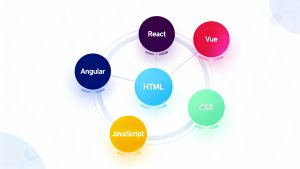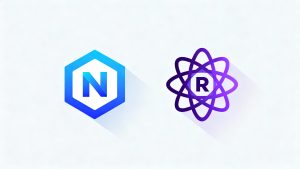In the digital era, a strong online presence is essential for any business or individual. Whether you’re running an e-commerce store, building a personal brand, or managing a corporate website, the terms web design and web development are likely to come up. Often used interchangeably, these terms refer to two distinct aspects of the website creation process.
Web design focuses on the visual and experiential aspects of a site—the layout, colors, fonts, and interactive elements that users see and engage with. Web development, on the other hand, deals with the underlying structure and functionality of the site—how it’s built and how it works behind the scenes.
Understanding the difference between web design and web development helps in assembling the right team for your project and aligning your expectations accurately. Let’s break down each domain.
What Is Website Design?
Web design is the process of conceptualizing, planning, and arranging content intended for the internet. Today, designing a website goes beyond aesthetics—it includes the site’s structure, user experience (UX), and user interface (UI).
A web designer works closely with color theory, typography, spatial relationships, and brand identity to create engaging interfaces. They often use tools like Figma, Adobe XD, or Sketch.
Core Responsibilities of a Web Designer:
- Creating wireframes and prototypes
- Choosing design elements like color palettes and fonts
- Ensuring responsive design across devices
- Designing user journeys and flows
Example: HTML/CSS from a Designer’s Perspective
html
<!DOCTYPE html>
<html lang="en">
<head>
<meta charset="UTF-8">
<title>Simple Web Page</title>
<style>
body {
font-family: 'Segoe UI', sans-serif;
background-color: #f4f4f4;
color: #333;
margin: 0;
padding: 20px;
}
header {
background-color: #0066cc;
color: white;
padding: 20px;
text-align: center;
}
</style>
</head>
<body>
<header>
<h1>Welcome to Our Website</h1>
</header>
</body>
</html>This code shows how a designer might implement basic color schemes, typography, and layout styling.
Types Of Web Designers
- UX Designers – Focus on user behavior and design experiences that are intuitive and user-friendly.
- UI Designers – Deal with the specific look and feel of the elements on the screen.
- Visual Designers – Combine UX and UI with branding and graphic design.
What Is Website Development?
Web development is the process of building and maintaining websites. It’s the coding and programming that makes a website function.
There are two main categories of web development:
- Frontend development – Concerned with everything users interact with directly in their browsers.
- Backend development – Focused on the server, database, and application logic.
Web developers use programming languages, frameworks, and libraries to bring the web design to life.
Types Of Web Developers
- Frontend Developers
- Technologies: HTML, CSS, JavaScript, React, Vue, Angular
- Focus: Making designs functional and interactive
- Backend Developers
- Technologies: Node.js, Python (Django/Flask), PHP, Ruby on Rails
- Focus: Data processing, authentication, API development
- Fullstack Developers
- Combine both frontend and backend capabilities
- Popular in startups and small teams
Example: A Simple Fullstack Web App
Frontend (HTML + JS)
html
<!DOCTYPE html>
<html>
<head>
<title>User Form</title>
</head>
<body>
<form id="userForm">
<input type="text" id="name" placeholder="Enter Name" />
<button type="submit">Submit</button>
</form>
<script>
document.getElementById('userForm').onsubmit = async (e) => {
e.preventDefault();
const name = document.getElementById('name').value;
await fetch('/api/user', {
method: 'POST',
headers: { 'Content-Type': 'application/json' },
body: JSON.stringify({ name })
});
};
</script>
</body>
</html>Backend (Node.js with Express)
javascript
const express = require('express');
const app = express();
app.use(express.json());
app.post('/api/user', (req, res) => {
const { name } = req.body;
console.log('User submitted:', name);
res.send({ status: 'success' });
});
app.listen(3000, () => console.log('Server running on port 3000'));This example shows a basic interaction between frontend and backend—a key responsibility of fullstack developers.
What’s The Difference Between Web Design Vs. Web Development?
Here’s a quick breakdown:
- Focus Area: Design is about how it looks, development is about how it works.
- Tools Used: Designers use visual tools (Figma, Sketch), while developers use code editors and frameworks.
- Skillset: Designers need creativity and an understanding of human behavior. Developers need logical thinking and programming knowledge.
Web Design vs. Web Development: What Are The Similarities?
While web design and web development are distinct disciplines with separate roles and tools, they must work in close coordination to build successful digital products. The line between the two often blurs, especially in agile environments or smaller teams. Let’s explore some deeper areas where design and development align:
Collaboration: Translating Vision into Function
At the core of any effective website project is strong collaboration between designers and developers. Designers may start by creating wireframes, mood boards, and interactive mockups. But those ideas can only become reality through code.
- Designers rely on developers to maintain pixel-perfect implementations of UI elements and behaviors.
- Developers often provide feedback on what’s technically feasible or offer alternative ways to achieve a similar visual result.
- Tools like Figma, Zeplin, and Storybook are often used to bridge this communication gap, providing shared platforms for design specs, assets, and handoff.
Responsiveness: Ensuring Seamless Experiences Across Devices
Both web designers and developers are responsible for ensuring the website functions and looks great across various devices and screen sizes.
- Designers plan responsive layouts during the design phase, often using a mobile-first approach or breakpoints for tablets, desktops, and ultra-wide monitors.
- Developers implement those layouts using responsive web design techniques, such as CSS Flexbox, Grid, and media queries.
Performance and UX: Shared Responsibility for Quality
Both designers and developers have a stake in performance and user experience:
- Designers optimize layouts to reduce cognitive load, use clear visual hierarchies, and avoid unnecessary clutter that can confuse users.
- Developers optimize code to reduce page load times, minimize HTTP requests, lazy-load images, and implement efficient data-fetching logic.
Slow-loading websites or overly complex interfaces can drive users away—regardless of how visually stunning the site is. Great design is ineffective without smooth, performant development, and optimized development loses impact without thoughtful, intuitive design.
Conclusion
While web design and web development are two sides of the same coin, each requires unique skills and tools. Designers focus on appearance and experience; developers bring those designs to life with logic and code. Understanding the differences—and how they complement each other—is crucial whether you’re hiring a team, choosing a career path, or managing a digital project.
In India’s thriving digital landscape, mastering either (or both) opens doors to rewarding opportunities across industries. The synergy between design and development is what powers every successful website and application we use today.




1 thought on “Difference Between Web Design and Web Development”
Great breakdown of web design vs. web development! You made a complex topic easy to understand with clear examples and visuals. A must-read for beginners and anyone looking to build a website. Thanks for the insightful, well-structured post it’s both informative and practical.